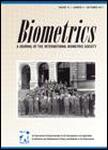版权所有:内蒙古大学图书馆 技术提供:维普资讯• 智图
内蒙古自治区呼和浩特市赛罕区大学西街235号 邮编: 010021

作者机构:Univ Penn Wharton Sch Dept Stat Philadelphia PA 19104 USA Univ Penn Sch Arts & Sci Grad Grp Appl Math & Computat Sci Philadelphia PA 19104 USA Univ Penn Perelman Sch Med Dept Anesthesiol & Crit Care Philadelphia PA 19104 USA
出 版 物:《BIOMETRICS》 (生物统计学)
年 卷 期:2022年第78卷第4期
页 面:1639-1650页
核心收录:
学科分类:0710[理学-生物学] 07[理学] 09[农学] 0714[理学-统计学(可授理学、经济学学位)]
基 金:The authors would like to thank Professor Dylan S. Small editors two referees and participants at the University of Pennsylvania causal inference reading group for their helpful comments and feedback
主 题:heterogeneous treatment effect instrumental variable mixed-integer programming randomization-based inference statistical matching
摘 要:Instrumental variable (IV) methods are widely used in medical research to draw causal conclusions when the treatment and outcome are confounded by unmeasured confounding variables. One important feature of such studies is that the IV is often applied at the cluster level, for example, hospitals or physicians preference for a certain treatment where each hospital or physician naturally defines a cluster. This paper proposes to embed such observational IV data into a cluster-randomized encouragement experiment using nonbipartite matching. Potential outcomes and causal assumptions underpinning the design are formalized and examined. Testing procedures for two commonly used estimands, Fisher s sharp null hypothesis and the pooled effect ratio (PER), are extended to the current setting. We then introduce a novel cluster-heterogeneous proportional treatment effect model and the relevant estimand: the average cluster effect ratio. This new estimand is advantageous over the structural parameter in a constant proportional treatment effect model in that it allows treatment heterogeneity, and is advantageous over the PER estimand in that it does not suffer from Simpson s paradox. We develop an asymptotically valid randomization-based testing procedure for this new estimand based on solving a mixed-integer quadratically constrained optimization problem. The proposed design and inferential methods are applied to a study of the effect of using transesophageal echocardiography during coronary artery bypass graft surgery on patients 30-day mortality rate. R package ivdesign implements the proposed method.